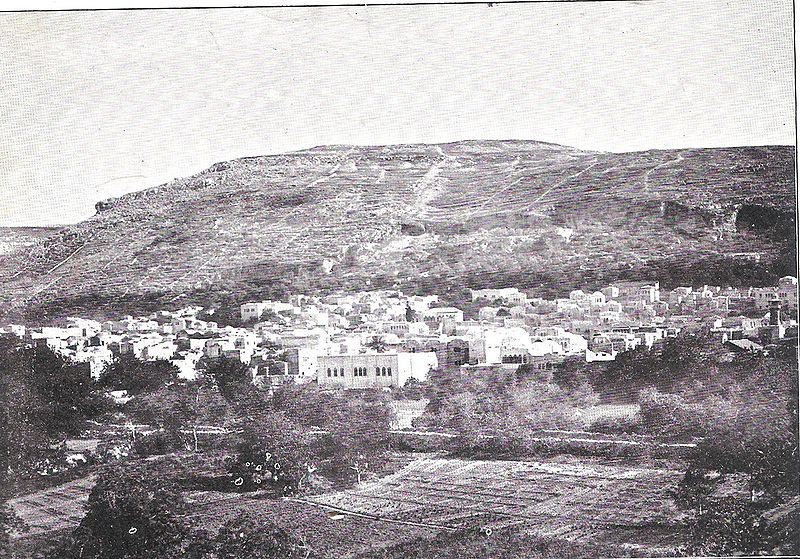
Bereishit יב (Genesis 12)
1 Now the Eternal One said unto Avram: ‘Get out of your country, and from your kindred, and from your father’s house, unto the land that I will show you. 2 And I will make of you a great nation, and I will bless you, and make your name great; and you will be a blessing. 3 And I will bless them that bless you, and him that curses you will I curse; and in you shall all the families of the earth be blessed.’ 4 So Avram went, as the Eternal One had spoken unto him; and Lot went with him; and Avram was seventy and five years old when he departed out of Haran. 5 And Avram took Sarai his wife, and Lot his brother’s son, and all their substance that they had gathered, and the souls that they had gotten in Haran; and they went forth to go into the land of Kena’an; and into the land of Kena’an they came. 6 And Avram passed through the land unto the place of Shekhem, unto the terebinth of Moreh. And the Kena’ani was then in the land. 7 And the EterOone appeared unto Avram, and said: ‘Unto your seed will I give this land’; and he built there an altar unto the Eternal One, who appeared unto him.
Shechem was a Canaanite city during the time of Abraham. Traditionally, Shechem is associated with Nablus but is specifically identified with the site of Tell Balatah i Balata al-Balad (a suburb of Nablus) in Samaria. It lies between Mount Gerizim and Mount Ebal.1 According to the Tanakh, Shechem lays north of Beth-El and Shiloh on the highway going from Jerusalem to the northern parts of Samaria (Judges 21:19). Shechem is a short distance from Michmethath (Joshua 17:7) and Dothan (Genesis 37:12-17). It was in the hill country of Ephraim (Joshua 20:7) immediately below Mount Gerizim (Judges 9:6-7).
The Madaba map places Shechem between Mount Gerizim and Mount Ebal2 as does Flavius Josephus in his work Antiquities of the Jews (4:8:44):
…and that when they had got possession of the land of the Canaanites, and when they had destroyed the whole multitude of its inhabitants, as they ought to do, they should erect an altar that should face the rising sun, not far from the city of Shechem, between the two mountains, that of Gerizzim, situate on the right hand, and that called Ebal, on the left…3
Shechem dates back approximately four thousand years. The city is mentioned in the third-millennium Ebla Tablets that were discovered near Aleppo, Syria.4 During Senusret III’s military campaign directed toward Nubia, a campaign of retribution and plunder, is recorded on an Egyptian stele belonging to Sobkkhu. This military campaign also led to the capture of a Sekmem (Shechem) in the hill country of Ephraim.5 In the fourteenth-century BCE Amarna Letters, Shechem is presented as part of the kingdom that was lorded over by Labayu.6
——————–
1Rast, Walter. Through the Ages in Palestinian Archaeology: An Introductory Handbook. (Harrisburg, PA: Trinity Press International, 1992).
2Rudd, Steve. “The Madaba Map and the Exodus Route” bible.ca. The Interactive Bible. n.d. Web. 4 November 2011. [http://www.bible.ca/archeology/bible-archeology-exodus-madaba-map.htm]
3Whiston, William. (trans.). The Works of Flavius Josephus. (1737). Web. 4 November 2011. [http://www.sacred-texts.com/jud/josephus/ant-4.htm]
4Kessler, Oren. “Excavations Done at Former Israelite Capital Shechem” jpost.com. Jerusalem Post. 25 July 2011. Web. 4 November 2011. [http://www.jpost.com/NationalNews/Article.aspx?id=230833]
5Dunn, Jimmy. “Senusret III, The 5th King of the 12th Dynasty.” touregypt.net. Tour Egypt. 20 June 2011. Web. 4 November 2011. [http://www.touregypt.net/featurestories/senusret3.htm]
6“Letter from Labayu of Shechem.” reshafim.org.il. Kibbutz Reshafim. n.d. Web. 4 November 2011. [http://www.reshafim.org.il/ad/egypt/a-labayu.htm]
